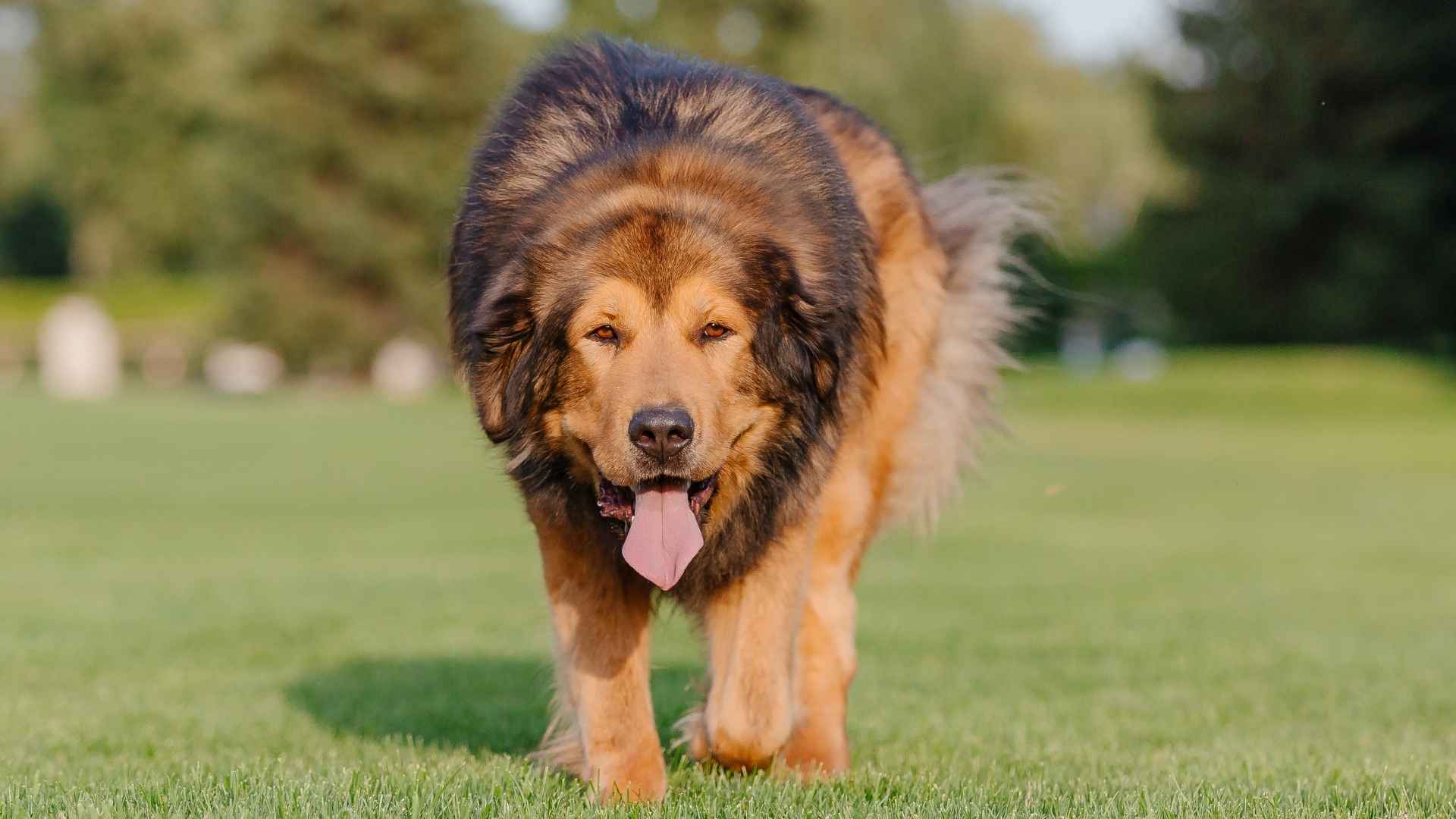Choosing the right dog isn’t just about looks or size—it’s about lifestyle, safety, and peace of mind. Many dog lovers quietly wonder, “If something happened, could my dog protect me?” That question matters even more if you live alone, have children, or own property.
Some large dog breeds naturally offer that sense of security. These dogs aren’t just big—they’re dependable and grounded. Many of the giant dog breed types were originally bred for protection, rescue work, or endurance in harsh environments.
From the tallest dog breeds in the world towering above the rest to the biggest dog breeds built like tanks, these giant breeds bring both presence and purpose. And while they look imposing, many also prove to be excellent family dogs, adapting well to home life with the right structure and training.
In this article, you’ll meet heavyweight dogs built to stand firm, protect, and adapt to real-world needs—whether in the mountains, suburbs, or your backyard.
Did you know?
The English Mastiff holds the world record for the heaviest dog ever, weighing a staggering 343 pounds—roughly the same as a full-grown lion!
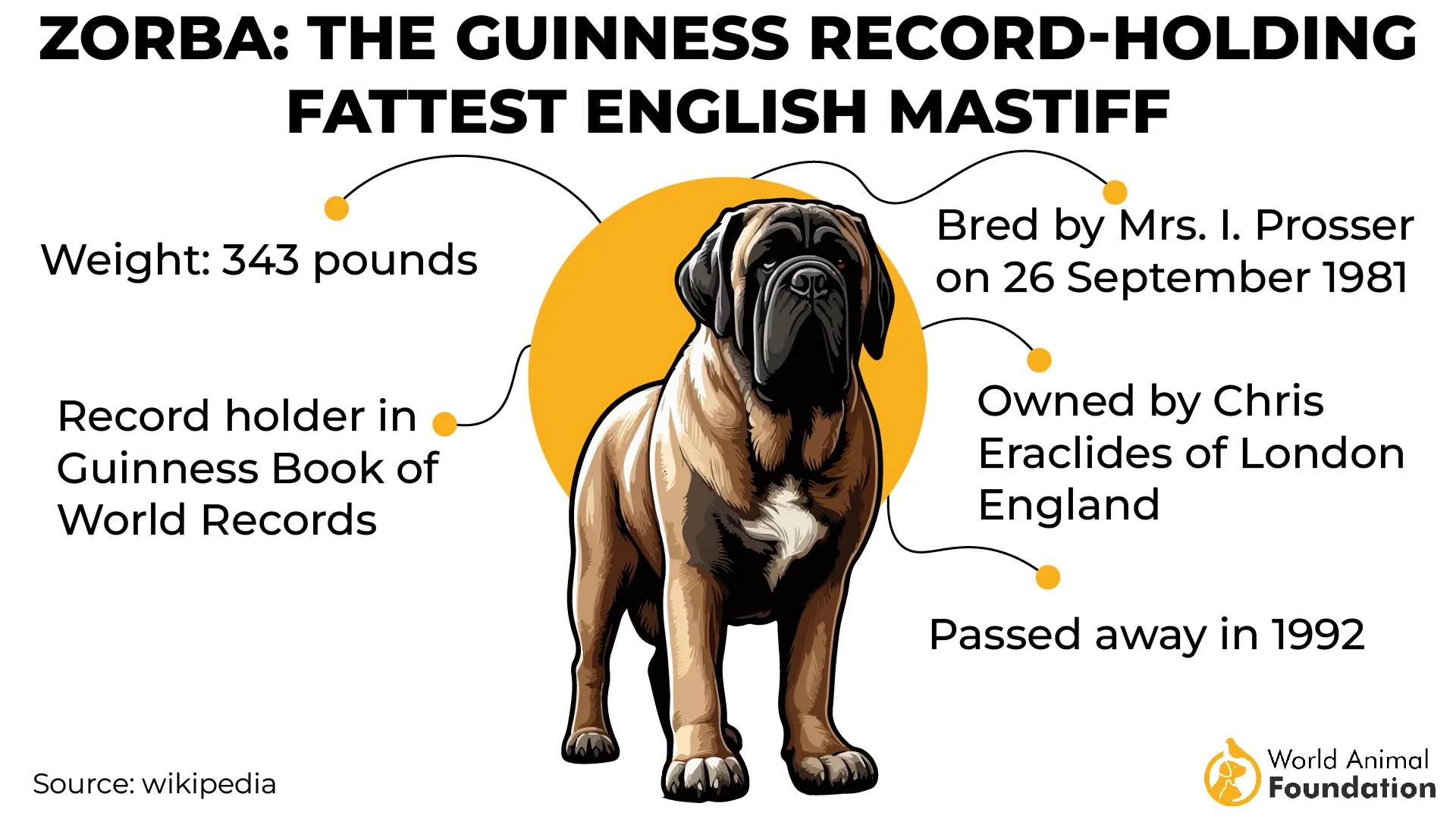
Heavyweight Dog Breeds
1. Mastiff
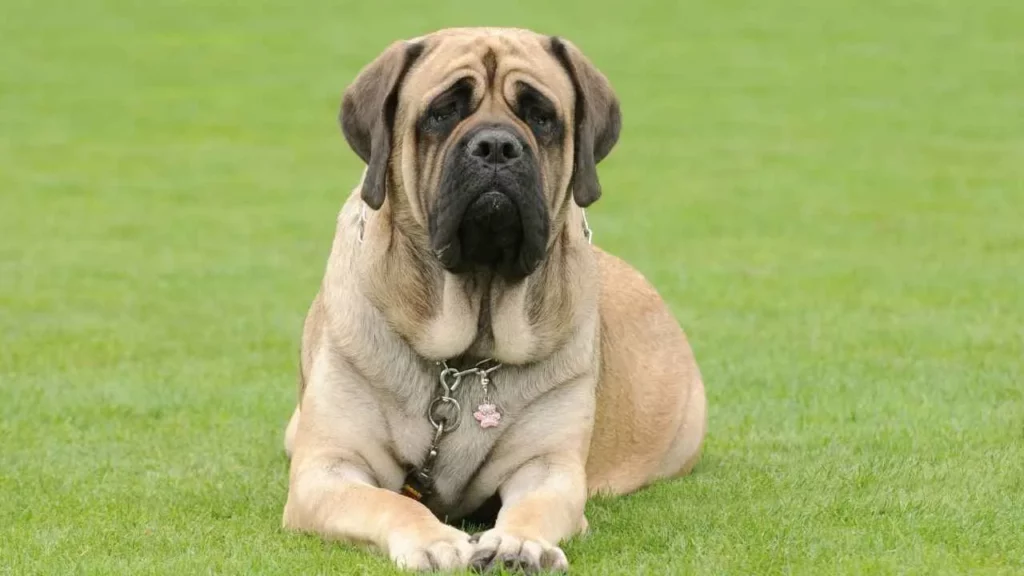
The Mastiff is one of the most physically imposing dog breeds. With its broad chest, a proportionately largest head of any breed, and solid frame, it has a presence that’s hard to ignore. Indoors, it often feels like living alongside a small piece of mobile architecture.
This breed is not built for speed, but for sheer strength and calm dominance. According to the American Kennel Club (the AKC), Mastiffs are observant, composed, and rarely react with unnecessary energy. A single bark is often enough to command attention and respect.
Early socialization and training are especially important. As puppies, they’re large and clumsy, quickly growing into powerful dogs that need consistent handling. Early training helps manage their size and strength.
Mastiffs are known for loud snoring and deep, resonant breathing. These sounds can be startling at first, but become part of their distinctive character. They enjoy quiet, comfortable spots around the home.
Despite their size, they are gentle and reserved with their families. Their loyalty and calm nature make them both effective guardians and affectionate companions.
Fun Fact
An adult Mastiff can outweigh a full-grown male kangaroo—and still insist on sharing a single couch cushion.
2. Saint Bernard
Saint Bernards are massive, mountain-bred dogs known for their strength and gentle nature. Originally used for alpine rescues, they are built to endure harsh climates and challenging terrain.
They are well known for drooling. After meals or drinks, they tend to shake their heads, sending strings of drool in all directions. Regular cleaning is simply part of life with a Saint Bernard.
Their thick coat makes them well-suited to cold environments. In warmer climates, they require extra care to stay cool and avoid overheating. A cool space and fresh water are essential.
These dogs tend to be quiet and mild-mannered. When they do bark, it’s deep and booming—something you’re likely to hear before you see them.
Saint Bernards are affectionate and calm, often resting their large heads on objects or people for comfort. Their size requires space, but their temperament makes them excellent family companions.
Fun Fact
Monasteries in Switzerland once trained Saint Bernards as rescue dogs to assist travelers crossing the treacherous Great St. Bernard Pass.
3. Newfoundland
The Newfoundland is a gentle giant with exceptional water instincts. Originally bred for water rescues, they are strong swimmers with natural life-saving abilities.
Their webbed feet and water-resistant coat make them ideal for aquatic tasks. Even without training, many will head straight into lakes or pools given the opportunity.
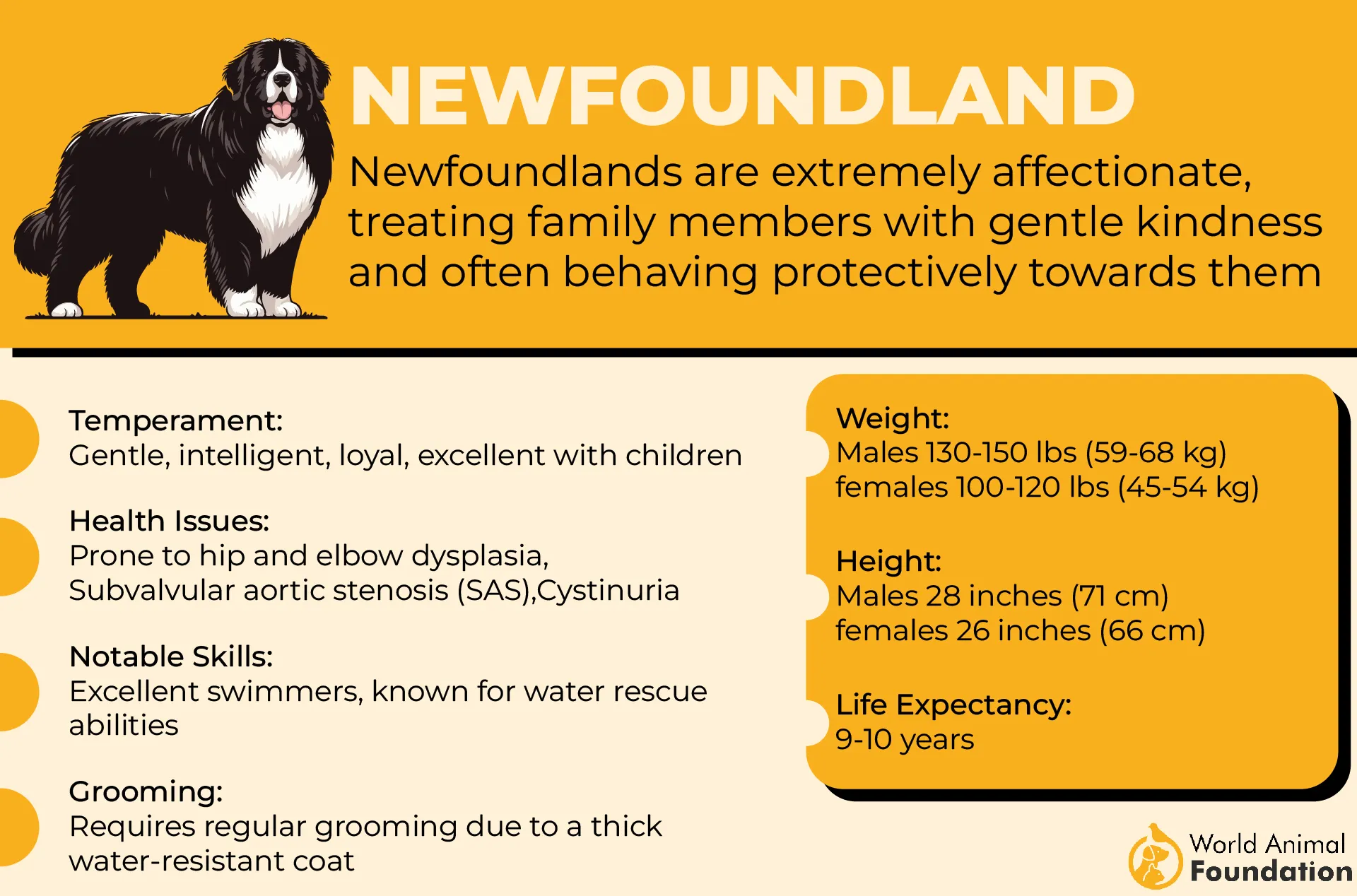
These dogs are very expressive, often using their eyes rather than their voices to communicate. They may not bark much, but they are always observant and engaged with their environment.
As per PetMD, grooming is essential due to their thick double coat. After water play or baths, drying can be a challenge, especially if they decide to shake midway through.
Newfoundlands are gentle dogs, affectionate and steady. They may lean into people when greeting them, using their body weight in an endearing but hefty show of affection.
Fun Fact
Newfoundlands were stationed on ships for man-overboard rescues and were even trained to dive into water from ship decks.
4. Tibetan Mastiff
The Tibetan Mastiff is a powerful and independent guard dog breed. With its dense coat and lion-like mane, it carries a noble and commanding appearance.
This royal dog breed is highly self-governing and prefers to follow its own internal schedule. Feeding and walk times often bend around its preferences more than yours.
Their coat is thick and heavy, requiring regular grooming. Mats can form easily, and brushing often reveals leaves and other debris trapped in their fur.
Tibetan Mastiffs are not eager to fetch or chase toys. They tend to assess situations before reacting, preferring to conserve their energy for more important matters.
Fencing is critical, as they are known to leap or dig to investigate what they perceive as threats. They thrive when given a clear role, especially in guarding property or livestock.
Fun Fact
In Tibet, these dogs were often stationed on rooftops to guard villages, serving as elevated sentinels watching over entire valleys.
5. Neapolitan Mastiff
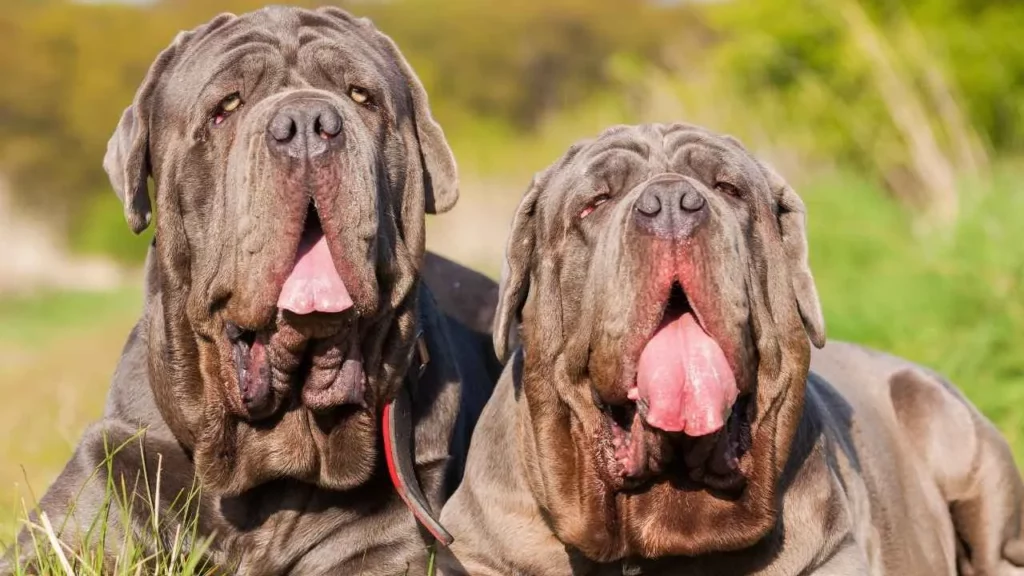
The Neapolitan Mastiff is an extremely protective and powerful dog with roots in ancient warfare and security. It’s known for its massive body and loose, wrinkled skin.
Their skin serves a purpose—it helps protect vital areas during physical conflict. Combined with their large head and intense stare, they have a formidable presence.
Indoors, they are quiet and low-energy, preferring cool, shaded spots. Despite their appearance, they are calm and composed when not actively guarding.
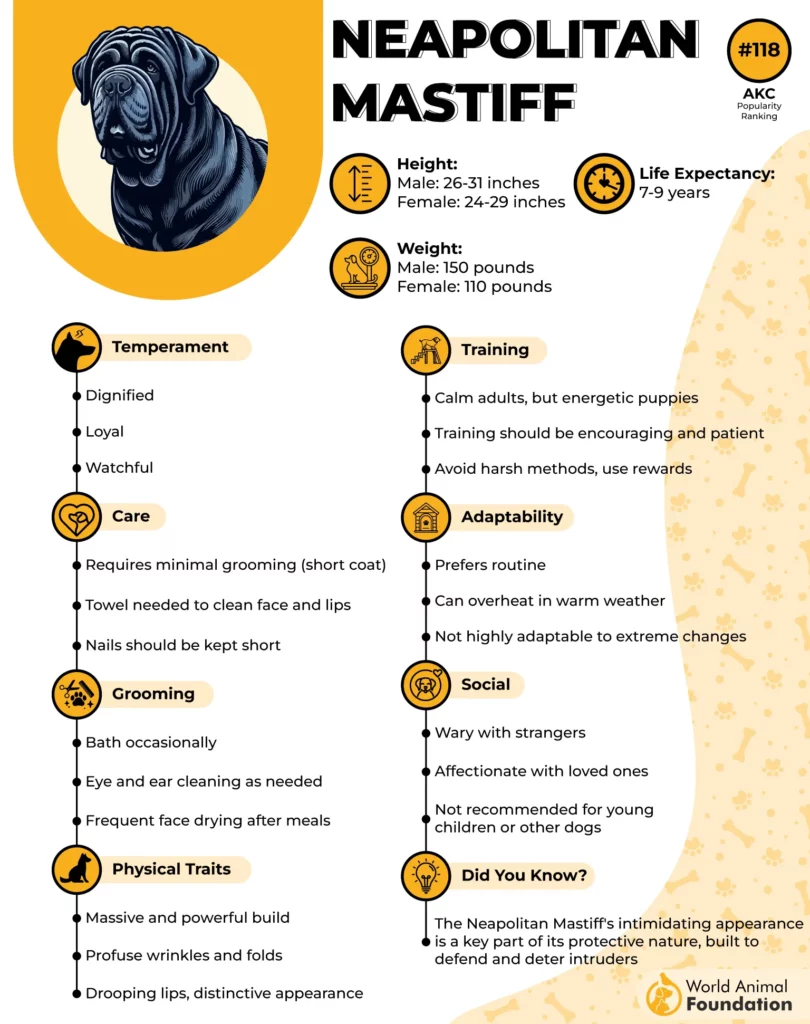
Managing their diet is crucial to avoid joint stress. Controlled portions and early training contribute to healthy development and proper socialization.
While loyal to their family, they are not always friendly toward other dogs. Their guarding instincts are strong and often expressed through silent, watchful behavior rather than excessive barking.
Fun Fact
Ancient Romans used Neapolitan Mastiffs in combat arenas and military lines, where their presence alone could intimidate crowds.
6. Irish Wolfhound
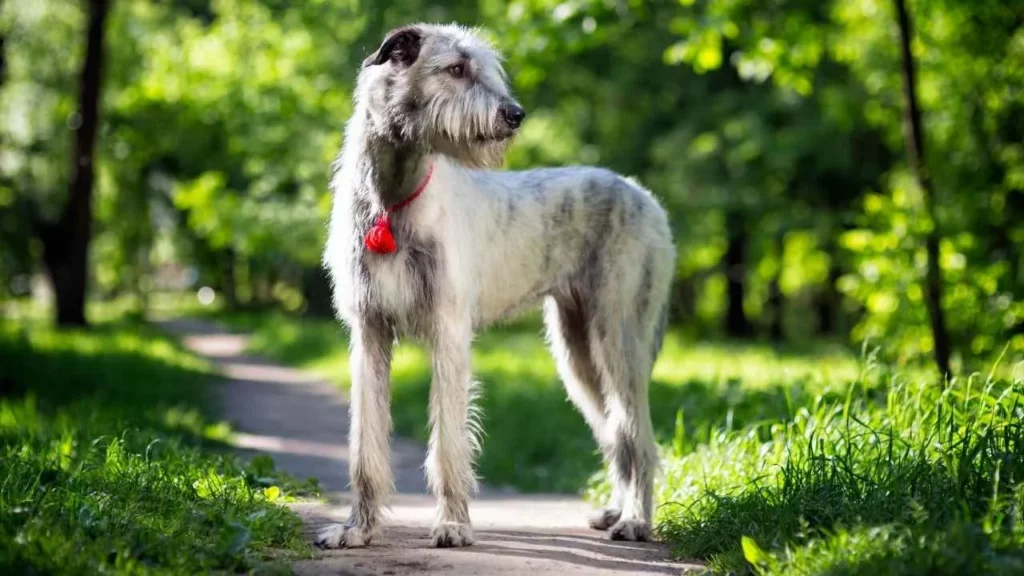
Irish Wolfhounds are the tallest of all dog breeds, originally bred as big game hunters like wild boar and wolves. Their calm strength and dignified appearance make them stand out.
They move with a light and measured stride. Despite their size, they are surprisingly agile, especially across open terrain or during play.
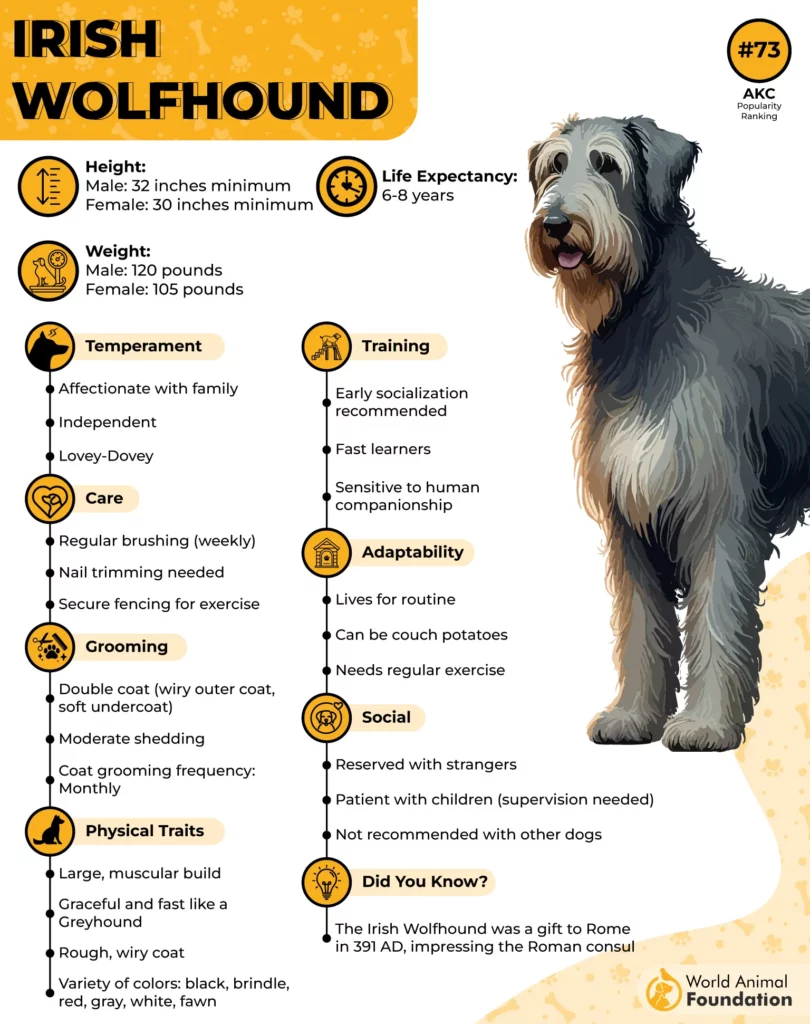
Their wiry coats require consistent grooming. Areas around the elbows and hips are especially prone to knots if not brushed weekly.
Health awareness is important from a young age. Bloat, joint stress, and cardiac issues are common concerns and should be monitored closely.
Irish Wolfhounds thrive in peaceful homes with predictable routines. They are not overly energetic but offer a steady and attentive companionship.
Fun Fact
In ancient Ireland, ownership of Irish Wolfhounds was restricted by social rank, emphasizing their prestigious standing.
7. Great Pyrenees
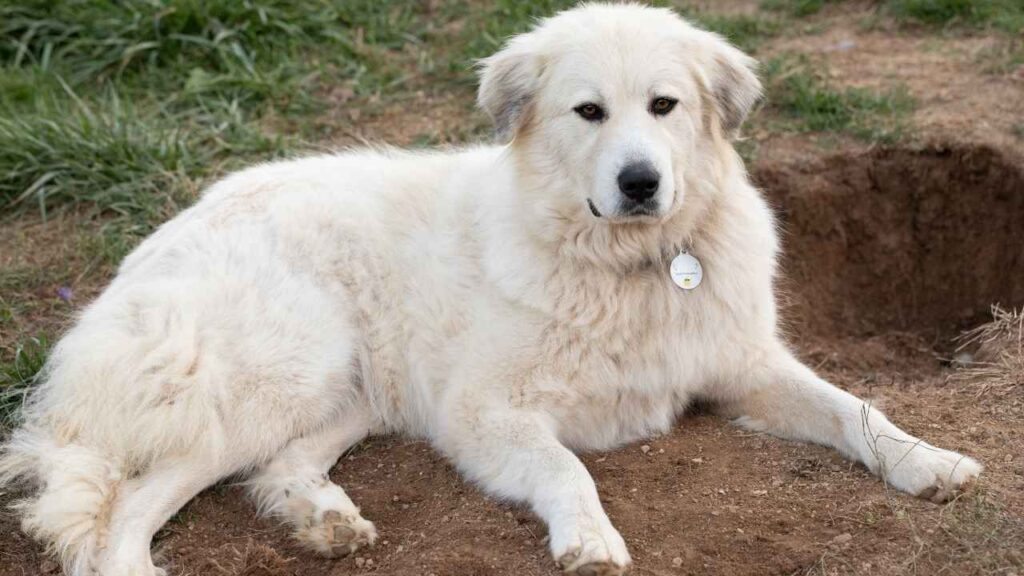
The Great Pyrenees is a powerful guardian dog originally bred to protect livestock. It is known for its patience, independence, and strong instincts.
This majestic breed is most active during the night, often patrolling and alerting to subtle sounds. Their protective qualities are deeply instinctual.

Hills Pet states that their thick, weather-resistant coat handles cold weather and snow well but still requires routine brushing. Fur between paw pads can collect debris and should be checked after outings.
They conserve their energy during the day, but are capable of long, purposeful movements. Diets should emphasize quality and slow-release energy.
Great Pyrenees are known to bark frequently when they detect movement or changes in the environment. Secure fencing and consistent routines help manage this tendency.
Fun Fact
To defend against predators, French shepherds historically outfitted Great Pyrenees dogs with spiked collars while they watched over sheep in rugged terrain.
8. Bullmastiff
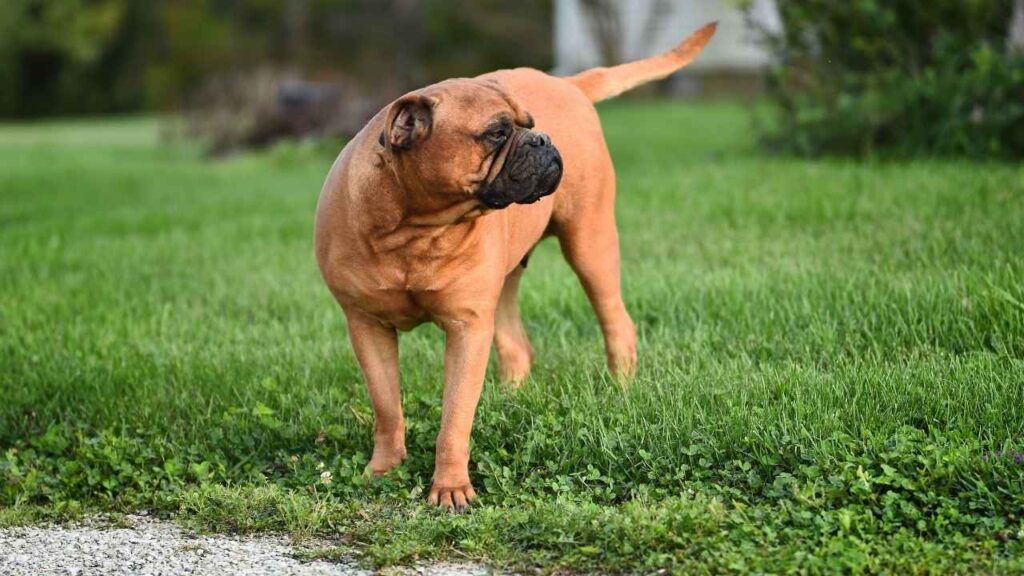
The Bullmastiff is a powerhouse breed developed for guarding estates. Known for its strength and discretion, it excels in quiet protection roles.
They can move quickly when needed, making them effective at intercepting intruders. Despite their size, their bursts of speed are impressive.
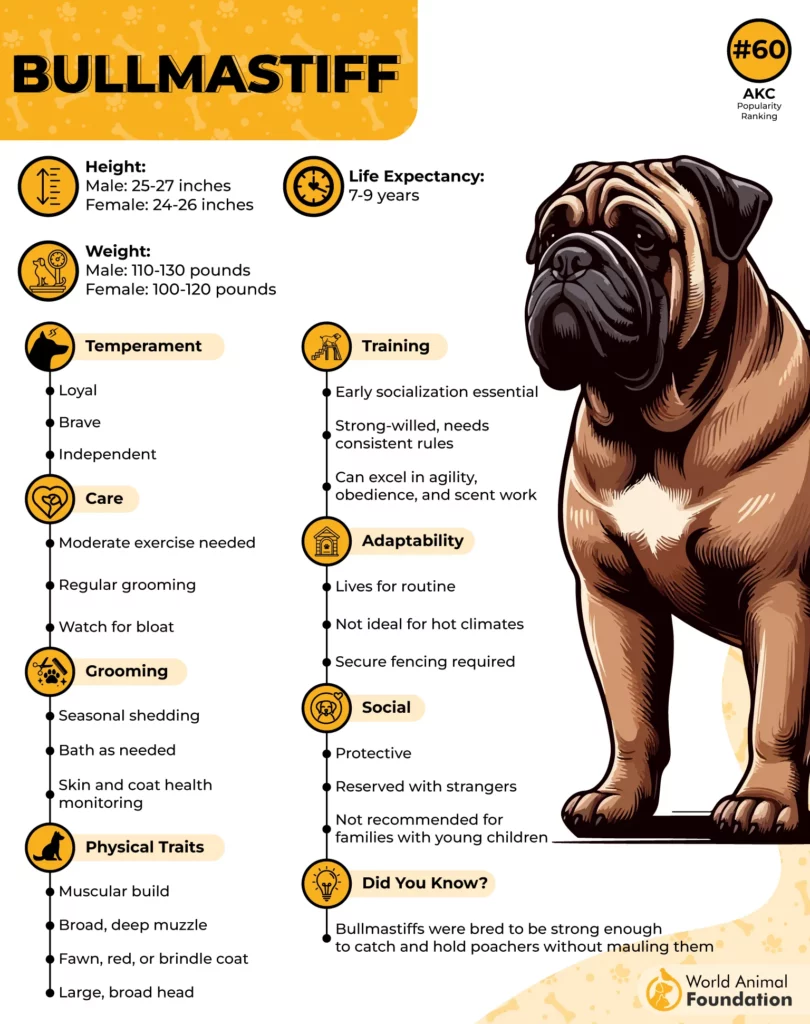
Bullmastiffs are not reactive or overly alert. They evaluate their surroundings and respond only when necessary, making their presence even more powerful.
They do best in controlled environments. Apartment living is possible with structure and calm, but space and strong floors are essential.
Their serious gaze and muscular build serve as natural deterrents. While affectionate with family, they are usually reserved with strangers.
Fun Fact
In 19th-century England, Bullmastiffs were known as “Gamekeeper’s Night Dogs” and were trained to track, tackle, and detain poachers until help arrived.
9. Anatolian Shepherd
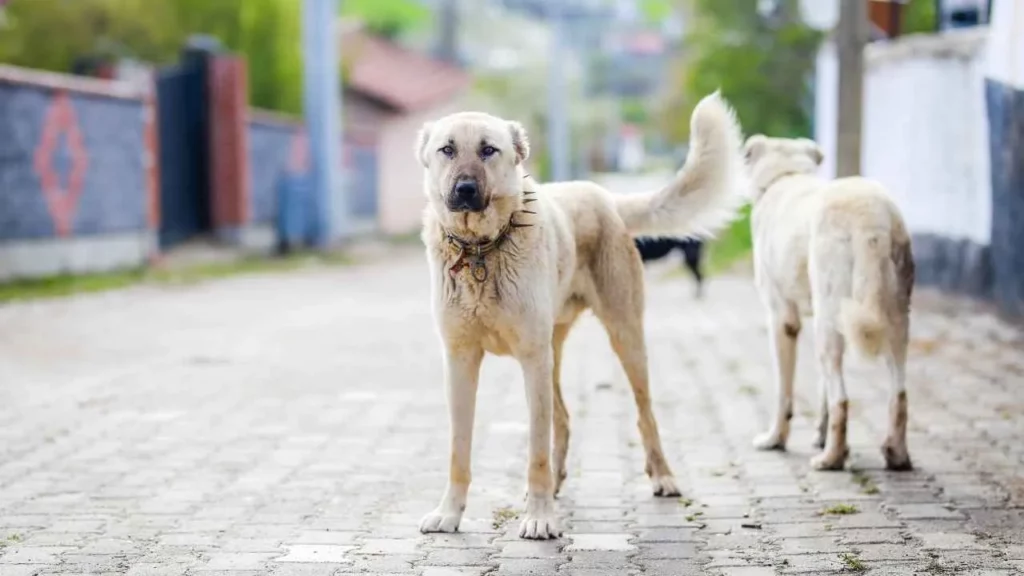
The Anatolian Shepherd is a confident and autonomous breed. Originally bred to protect livestock, it works best with a clear purpose.
They are not typical obedience dogs. Commands are considered and processed, not followed blindly. Their loyalty is built on mutual respect.
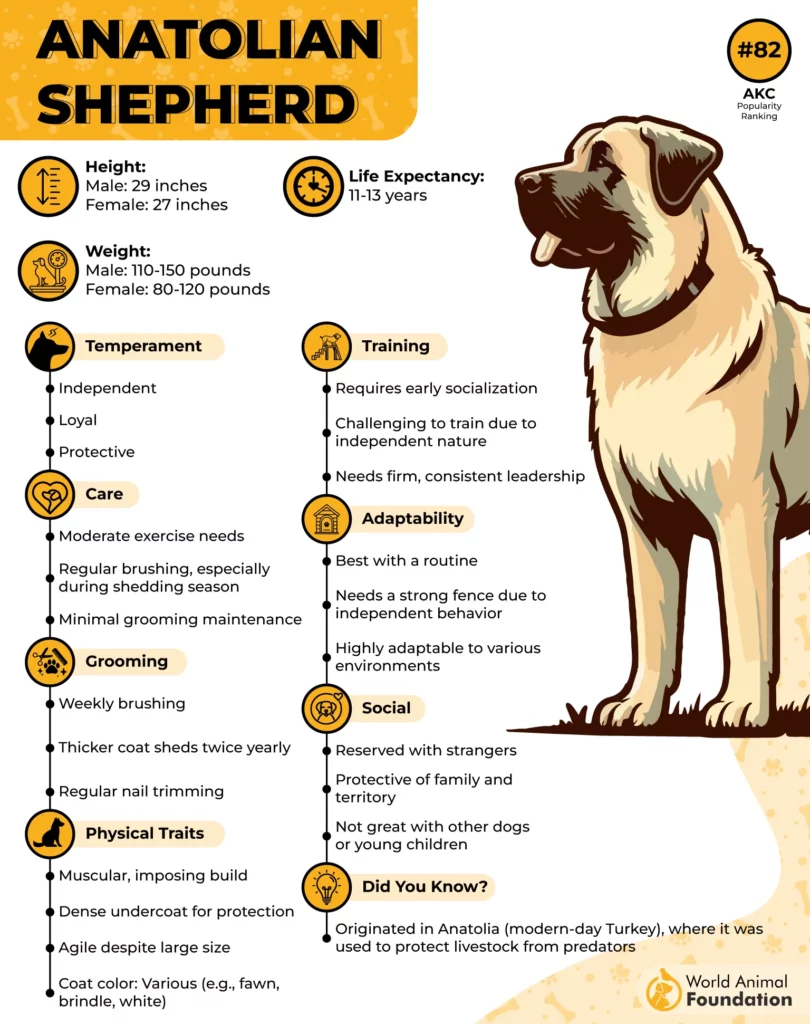
Their coat appears light but is dense and double-layered. Brushing becomes critical during shedding seasons to avoid matting and discomfort.
Without a job, Anatolians tend to create their own. This could include excessive alerting or restlessness, so structure is essential.
They patrol large areas independently and without supervision. Even today, farmers rely on them to watch over herds in vast open landscapes.
Fun Fact
In Africa, Anatolian Shepherds are used to prevent conflict between farmers and cheetahs, saving both livestock and big cats simply through their presence.
Conclusion
Heavyweight dog breeds offer more than size—they bring strength, vigilance, and a grounded presence that’s hard to ignore. Whether bred for protection, herding, or rescue, each breed has earned its reputation through centuries of purpose-driven traits.
Their physicality alone can act as a deterrent, but their intelligence, loyalty, and trainable instincts make them dependable in real-world environments. These dogs adapt, react, and respond in ways that many lighter breeds simply can’t match.
The Cocker Spaniel, Great Dane, Bernese Mountain Dog, French Mastiff, Black Russian Terrier, Dogue de Bordeaux, Scottish Deerhound, and Cane Corso are all notably large and protective dog breeds, but they were not mentioned above in our previous discussions.
From mountain guardians to gentle family protectors, heavyweight dogs continue to stand as pillars of trust and power. When chosen with care and commitment, they can become essential parts of secure, structured households, offering reassurance not just in size but in spirit and stability.


